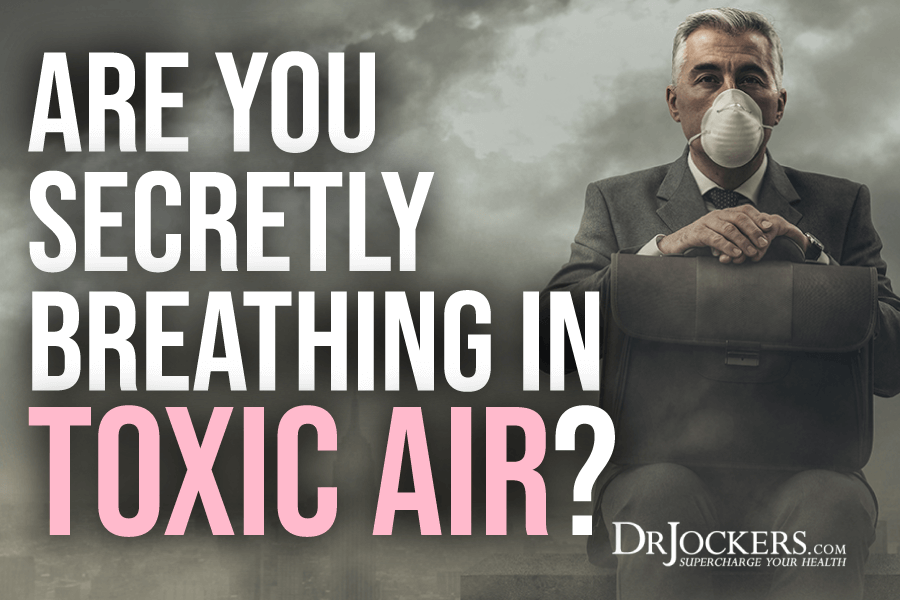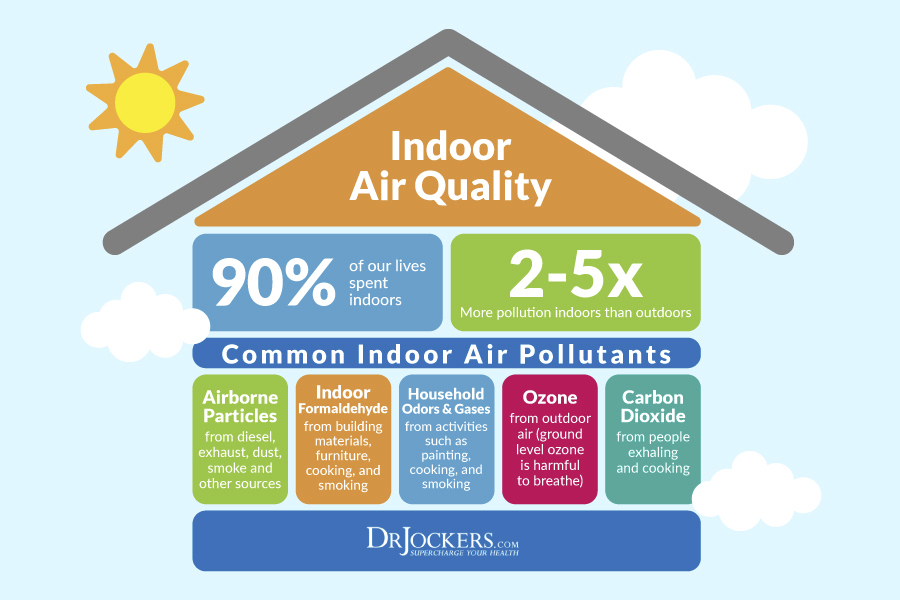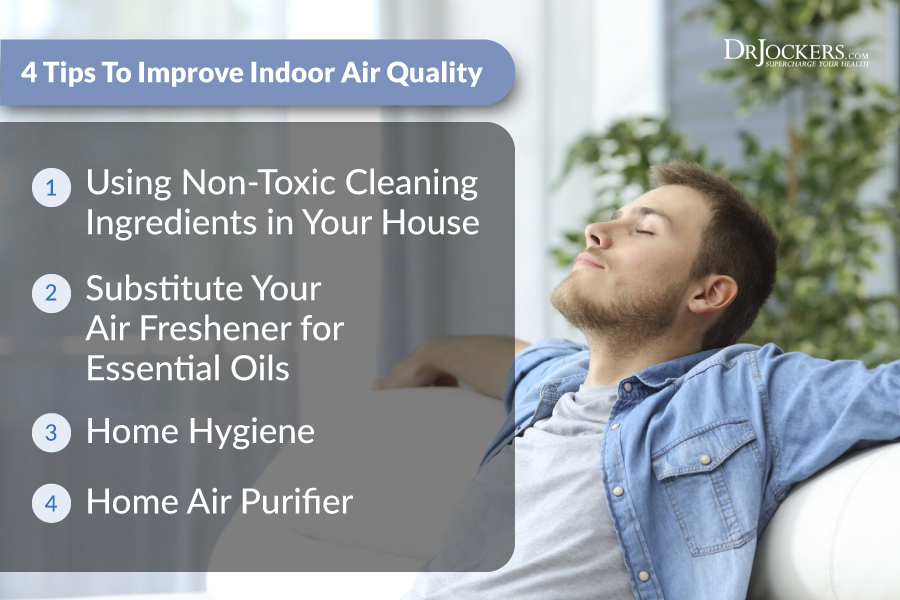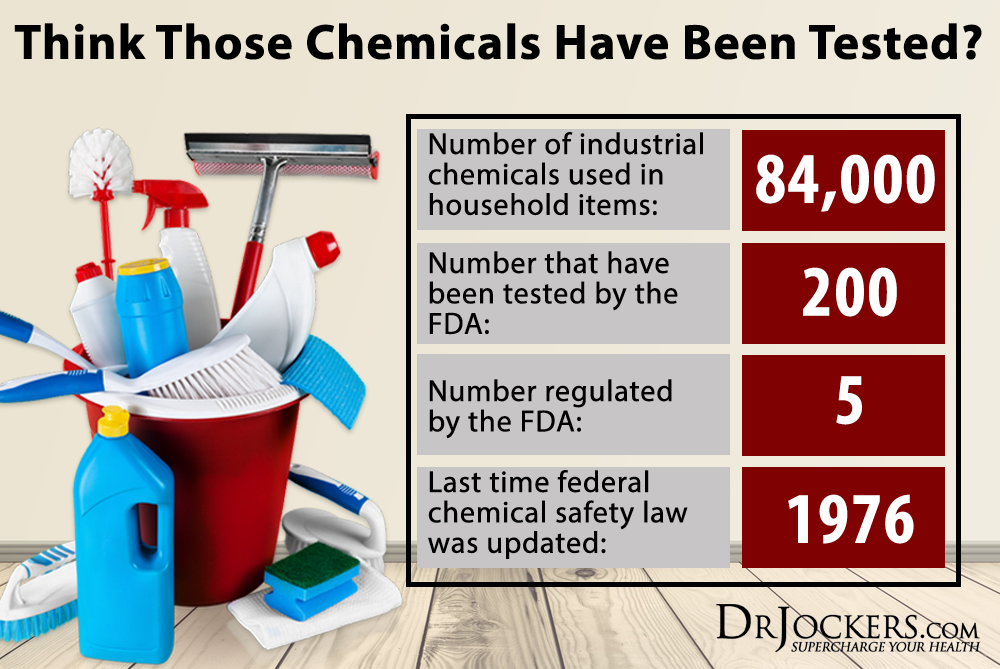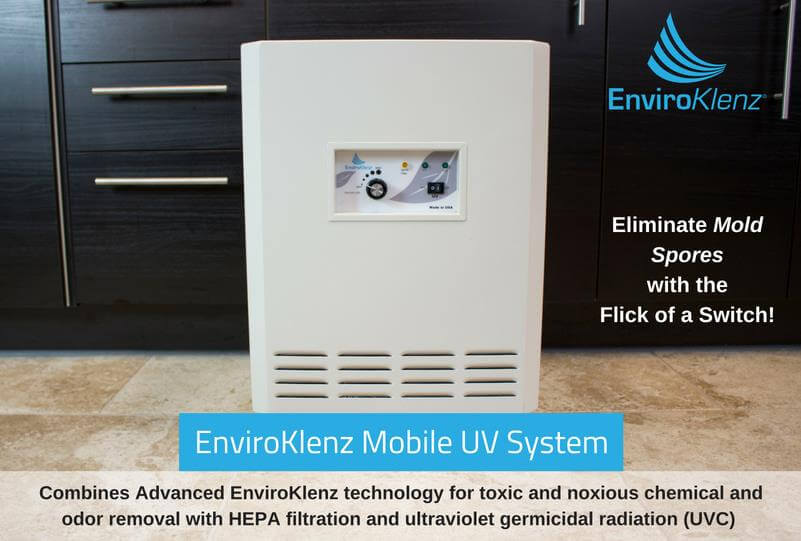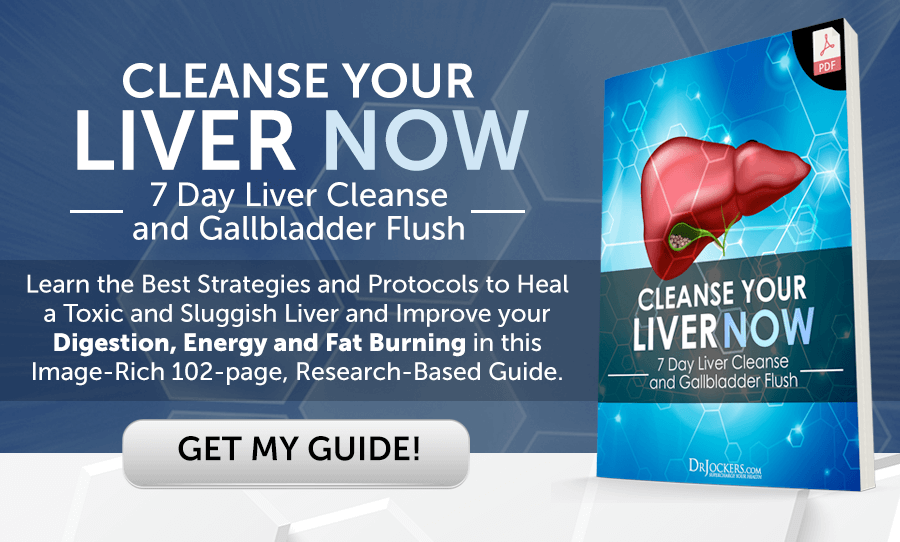Are You Secretly Breathing in Toxic Air?
Toxins and toxic air are all around us, in many environments, and most importantly in the air we breathe every day. We face a variety of potential health risks each day as we go about our day-to-day activities. From driving in a car, walking outside or even in our home when we are doing daily household chores, toxins are unavoidable.
And the fears related with air quality although present, most people tend to follow the rule of “out of sight, out of mind”. But the looming dangers associated with air pollution are quite high and demanding of our attention as air pollution was ranked as the worlds single biggest environmental health risk, linked to close to 7 million deaths in 2012 according to the World Health Organization (WHO)[1].
The staggering number of health conditions now being linked to air pollution is a major cause of concern for the population and if you could make changes to improve the quality of the air you breathe in, why wouldn’t you? Taking steps and learning how to help combat the toxins in you air and improve the overall quality of your air can help prevent you from secretly breathing in toxic air in the future.
Indoor vs Outdoor Air Quality
A total of 420 liters of oxygen is required for human survival and the ability for one to function properly throughout the day. This number should make you pause and think about the potential risks you are susceptible of garnering through the air you are breathing in on a daily basis. The quality of the air we breathe can have a direct impact on the health of our lungs as well as other vital organs in our body making air quality a huge concern for our overall health.
Researchers, in the past, have spent a dedicated amount of time in analyzing the hazards and risks associated with outdoor air as many believed that outdoor air quality had a big impact on human health due to the high levels of pollution being breathed in by the masses. However, as more studies have been conducted there is findings of another environment in which researchers have concluded the air quality can be even more hazardous to our health than our outdoor environment.
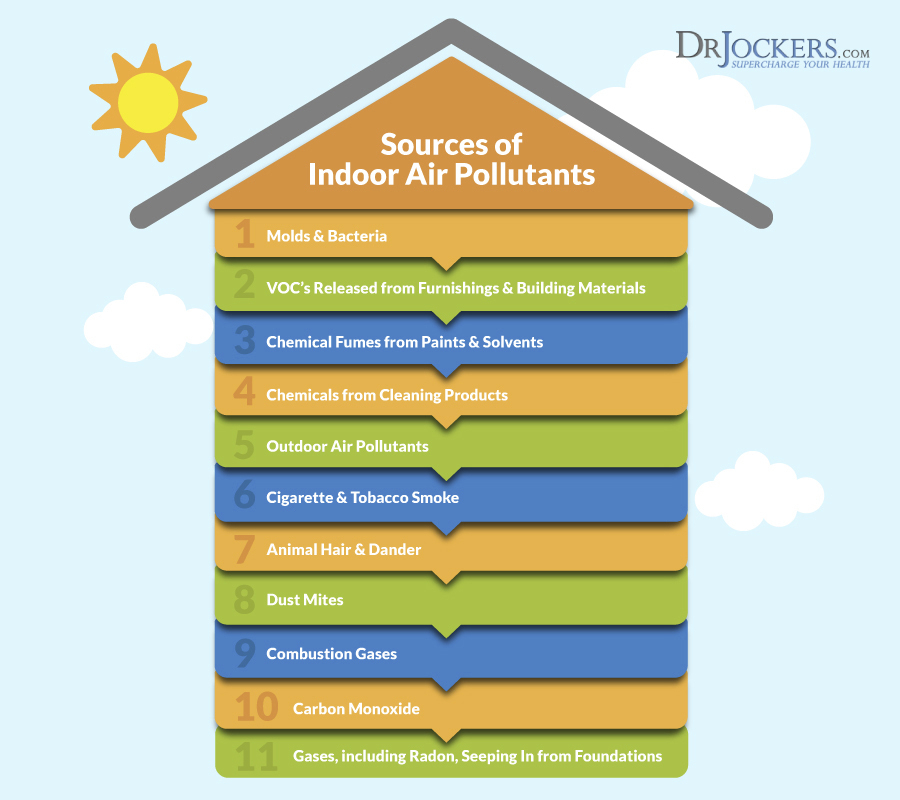
Testing Environmental Chemicals
In recent years, researchers have found surprising facts on the risks associated with both indoor and outdoor air quality, and these results will astound many. A growing body of data indicated that the indoor air in our homes and other buildings can be even more polluted than the outdoor air we breathe.
Taking into consideration the amount of time that most people spend indoors- an estimated 90 percent of their time according to the EPA- this data seems to ring true[2]. People are the main cause of pollution generation whether that be indoors or outdoors, and the more time and people in a space the greater the likelihood of high levels of pollution in that environment[3].
Great Plains lab has come out with a fantastic lab test that looks at over 172 different environmental pollutants using 18 different metabolites, all from a single urine sample. If you are curious as to your exposure to toxins and overall environmental toxin levels than check out this test here
Effects of Indoor Air Pollution
Pollutants in our environment can play a big role in the development and increased risk of many health-related ailments, as more research has pointed to indoor air pollution specifically as a perpetrator of specific health conditions. Our indoor air is a potential breeding ground for a variety of air pollutants including respirable particles, allergens, animal allergens, combustion gases, and even mold spores in your environment that could elicit a reaction and lead to health issues.
The human respiratory system usually gets the brunt of effects from air pollution as a plethora of respiratory problems can start to occur as a result of this exposure to the human body. Common respiratory problems that may come about from prolonged exposure to air pollution in your indoor or outdoor environment can include acute and chronic changes in pulmonary function and increased respiratory symptoms such as asthma and allergies[4].
Developing the onset of respiratory symptoms could indicate a significant increase and hazard in the level of air pollution in your environment. Another potential health hazard of indoor air pollution is the risk presented to children. Children, especially young children spend a vast amount of time indoors which puts them at an increased risk of health problems from the air pollution in their environment[5]. The health threat is real, and the scary reality that your child could be effected is even more alarming.
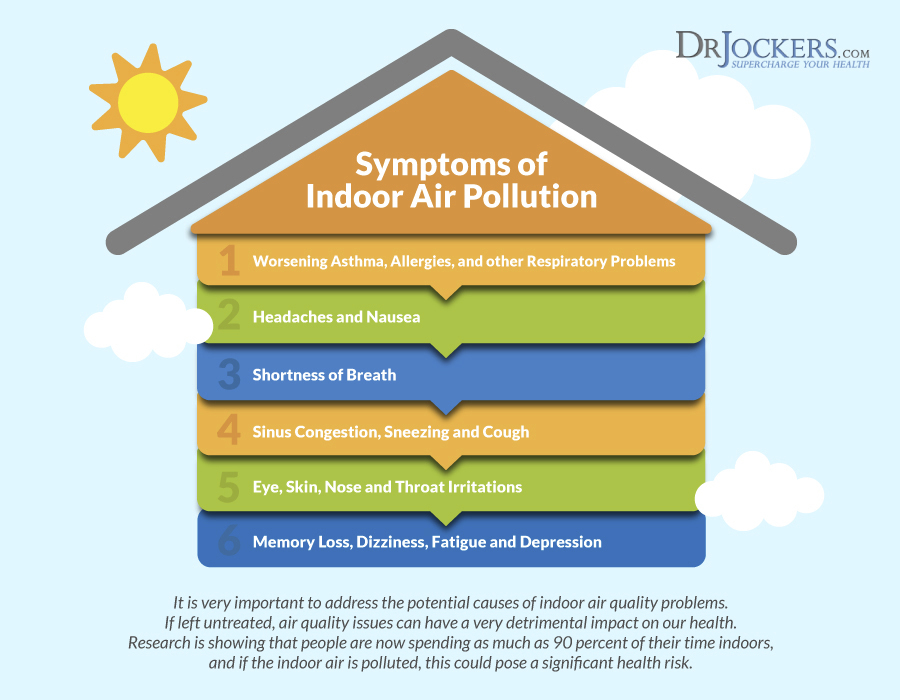
Indoor Air Pollutants and Their Sources
Indoor air quality is two to five times worse than outdoor air, according to the Environmental Protection Agency (EPA)[6]. What could be the possible reasons behind this alarming finding? Due to the amount of time we spend in our home, levels of pollution are bound to be higher, along with the conditions in our home that prevent the circulation of air pollutants out of our home.
Recently, home builders have been constructing homes to be “tight” to help improve efficiency and reduce utility costs, but the result of this construction is the lack of ventilation now present in most homes.
A lack of ventilation leads to air pollutants being trapped in the confines of our home with little area for them to be released into the outdoors. Thus, leading to the dangers to human’s health that are exposed. Taking into consideration the potential sources of air pollution in your indoor environment can be critical in reducing and promoting a non-toxic environment.
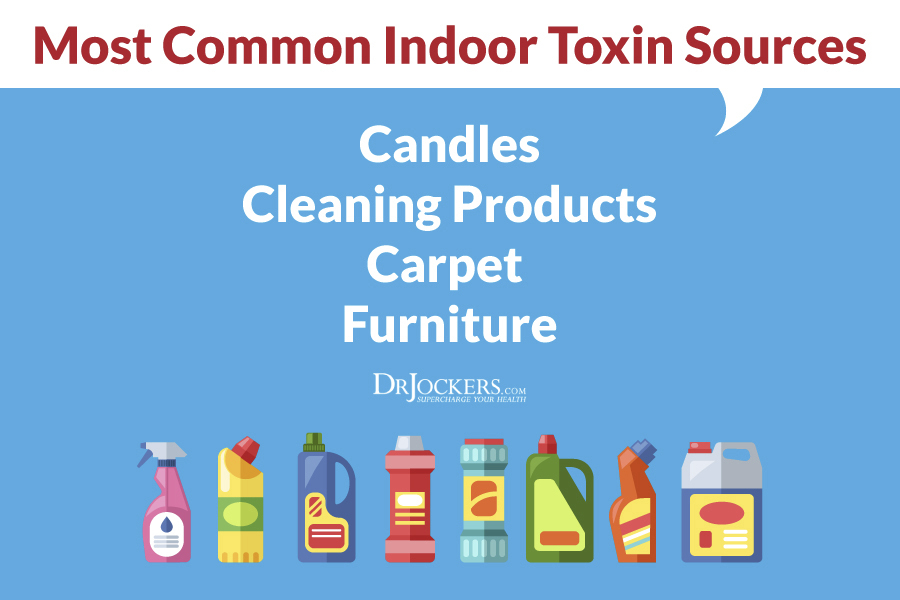
Candles
Scented candles, although serene and fragrant can be quite harmful to your indoor air. Candles release a large number of toxic chemicals into the air such as acetaldehyde, formaldehyde, acrolein, and polycyclic aromatic hydrocarbons[7].
These chemicals according to an EPA study conducted in 2001 showed that candles with more fragrance in them produced more soot, and released organic compounds that could lead to health problems such as a risk of cancer. Instead of using heavy fragrance candles with harsh chemicals, try an alternative less toxic candle like beeswax instead. I like these ones here
Cleaning Products
Toxic cleaning products in your home could also be a culprit of toxins and chemicals released in your home’s air. Many cleaning products and air fresheners contain terpene hydrocarbons, terpene alcohols, and other related unsaturated compounds that can be toxic to your health and environment.
Terpenes are volatile compounds which have been found to have a direct impact on asthma risks. Using alternative cleaning products that are non-toxic and safe for you and your environment can aid in the quality of your air.
Carpet
Carpet has been identified as a major contributor to toxic air in your home as VOCs (volatile organic compounds) are released from this type of flooring. A typical carpet contains about 120 different chemicals from carcinogens like formaldehyde, toluene, xylene and benzene, according to Linda Mason Hunter, the author of Creating a Safe and Healthy Home[8].
Natural fiber-made carpeting is preferred substitute you can use in your home to minimize the release of toxic air into your home’s environment.
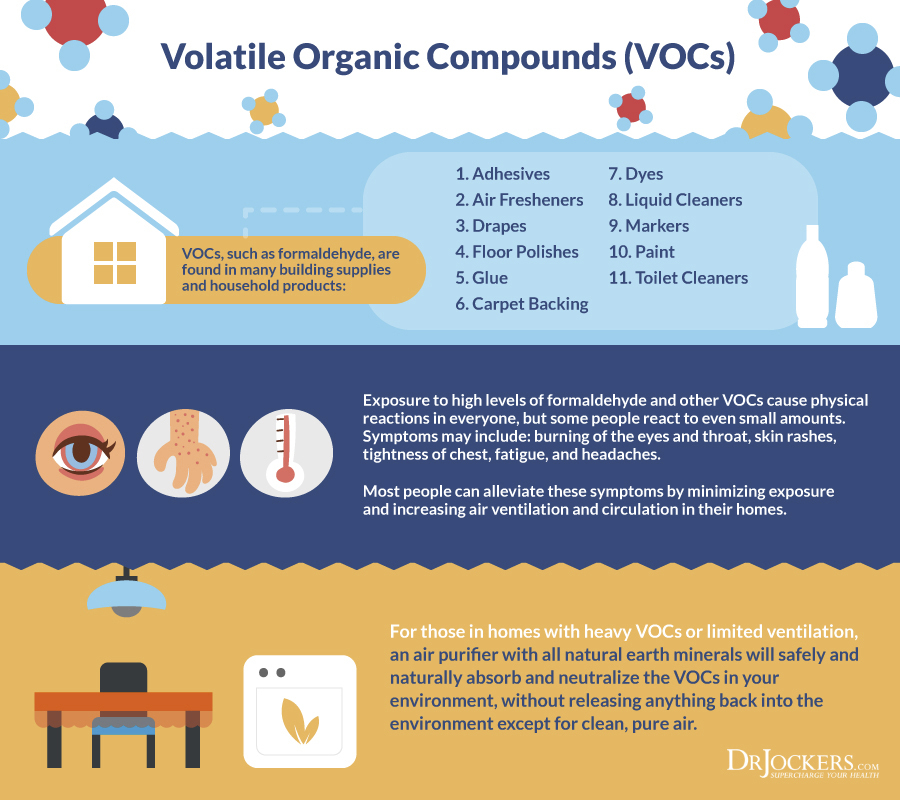
Furniture
A surprising culprit of air pollution in your home that many of us are not aware of is the furniture in our house. Furniture contains flame retardants that have been linked to a number of health ailments including cancer, reproductive issues as well as brain development in both animals and humans[9].
Furniture also produce VOCs into the air and can taint the quality of our indoor air tremendously. To avoid the release of flame-retardants and toxic air in your home you may consider purchasing older furniture that has had time to off-gas or just be diligent in ensuring your furniture meets safety standards before you bring it into your home.
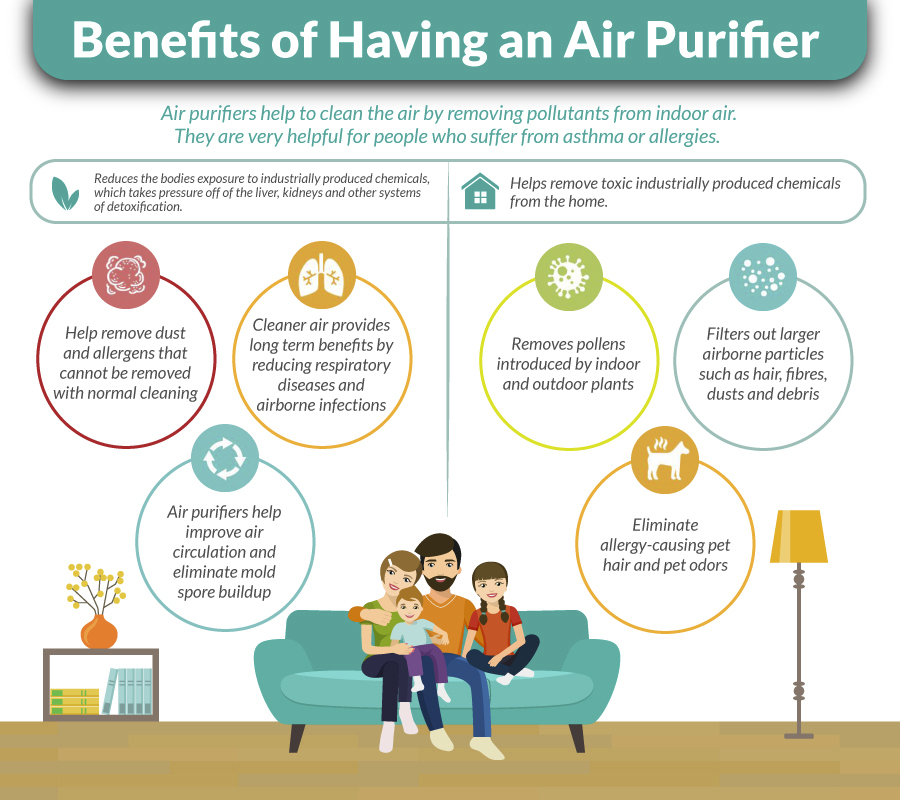
How to Improve Air Quality in Home
What do you do when you have toxic air from your indoor environment that is affecting your health? Once toxic air gets into your home it can be quite a challenge to remove, and the best solution may be to use a high efficiency air purifier to clean and detoxify the tainted air.
The EnviroKlenz Mobile Air System uses a two-stage filtration with both odor and chemical neutralization through a patented earth mineral technology air filter, and a hospital-grade HEPA filter that takes care of particulate matter up to 0.3 microns in size. Effectively removing particulate matter and chemicals in your air will aid in the overall improvement and quality of your home’s air as well as your health.
